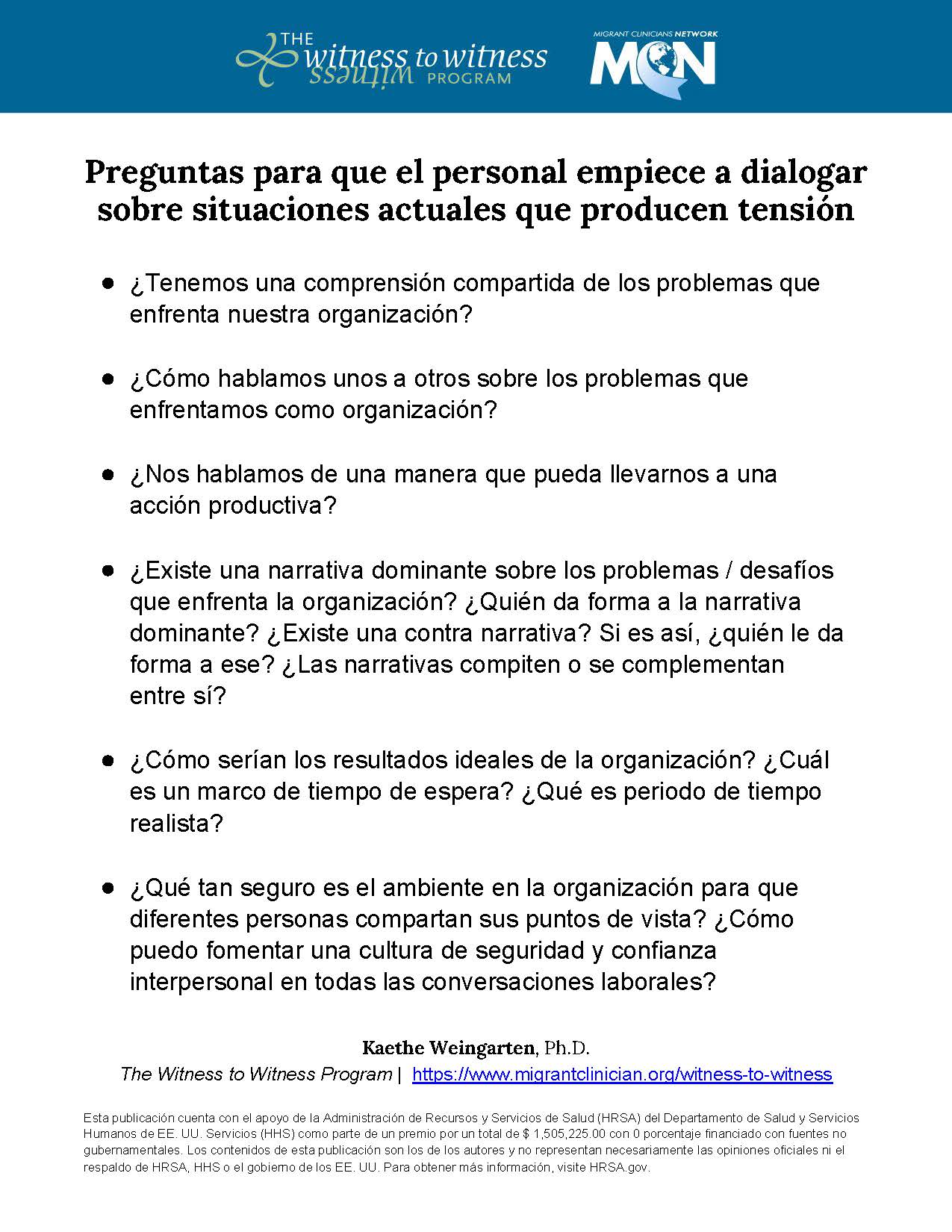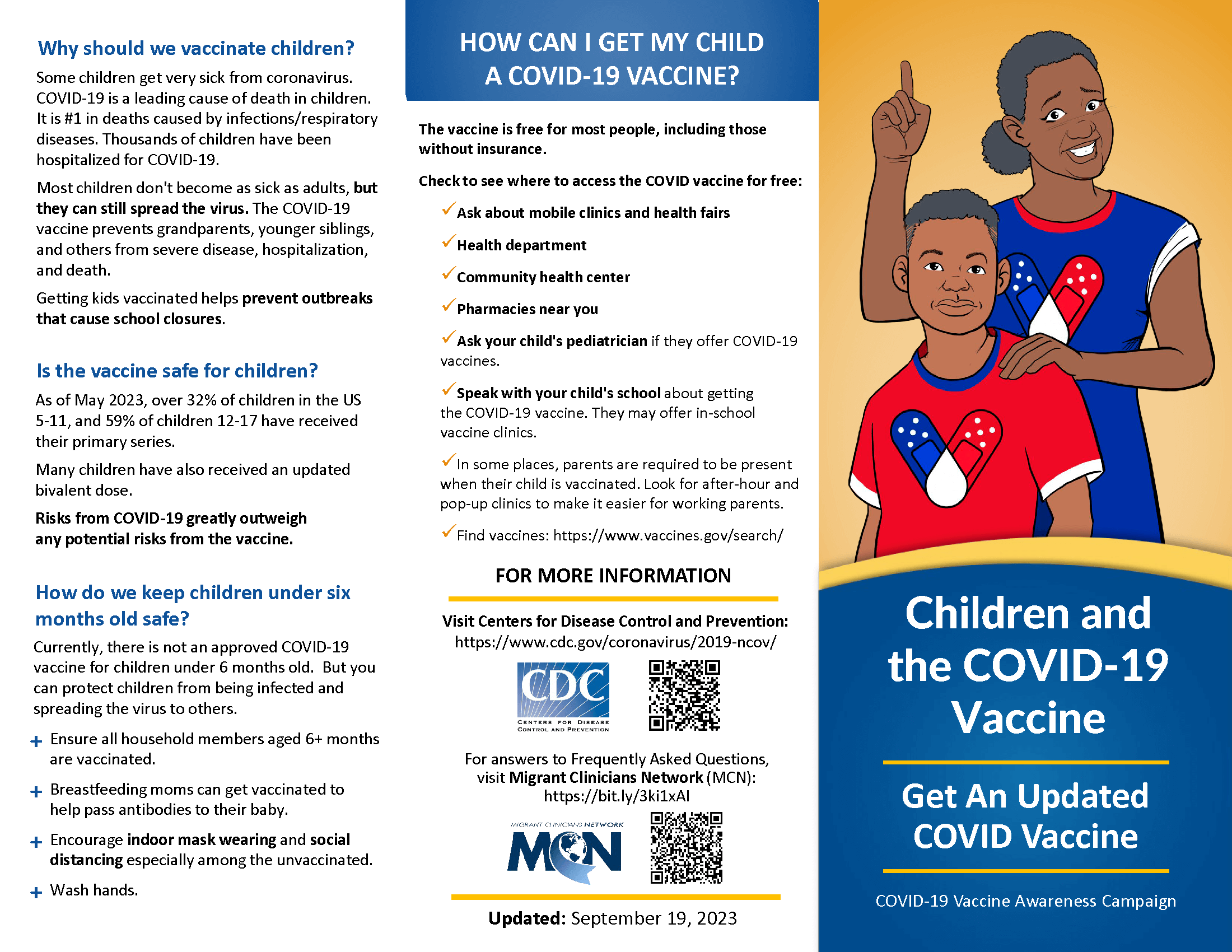
- 2023-10-05_Children-COVID-Vaccine-Trifold_Handout.pdf (634.67 KB)
- 2023-10-05_Children-COVID-Vaccine-Trifold_Handout_Template.pptx (6.62 MB)
- 2023-10-05_Niños-COVID-Vacuna-Tríptico_Material-de-apoyo.pdf (642.69 KB)
- 2023-10-05_Niños-COVID-Vacuna-Tríptico_Material-de-apoyo_Plantilla.pptx (4.24 MB)
- 2023-10-5_Modèl_depliyan_sou-vaksen-COVID-pou Timoun.pdf (606.96 KB)
- 2023-10-5_Modèl_depliyan_sou-vaksen-COVID-pou Timoun.pptx (4.23 MB)

- 2023-10-05_Children-COVID-Vaccine-Trifold_Handout.pdf (634.67 KB)
- 2023-10-05_Children-COVID-Vaccine-Trifold_Handout_Template.pptx (6.62 MB)
- 2023-10-05_Niños-COVID-Vacuna-Tríptico_Material-de-apoyo.pdf (642.69 KB)
- 2023-10-05_Niños-COVID-Vacuna-Tríptico_Material-de-apoyo_Plantilla.pptx (4.24 MB)
- 2023-10-5_Modèl_depliyan_sou-vaksen-COVID-pou Timoun.pdf (606.96 KB)
- 2023-10-5_Modèl_depliyan_sou-vaksen-COVID-pou Timoun.pptx (4.23 MB)
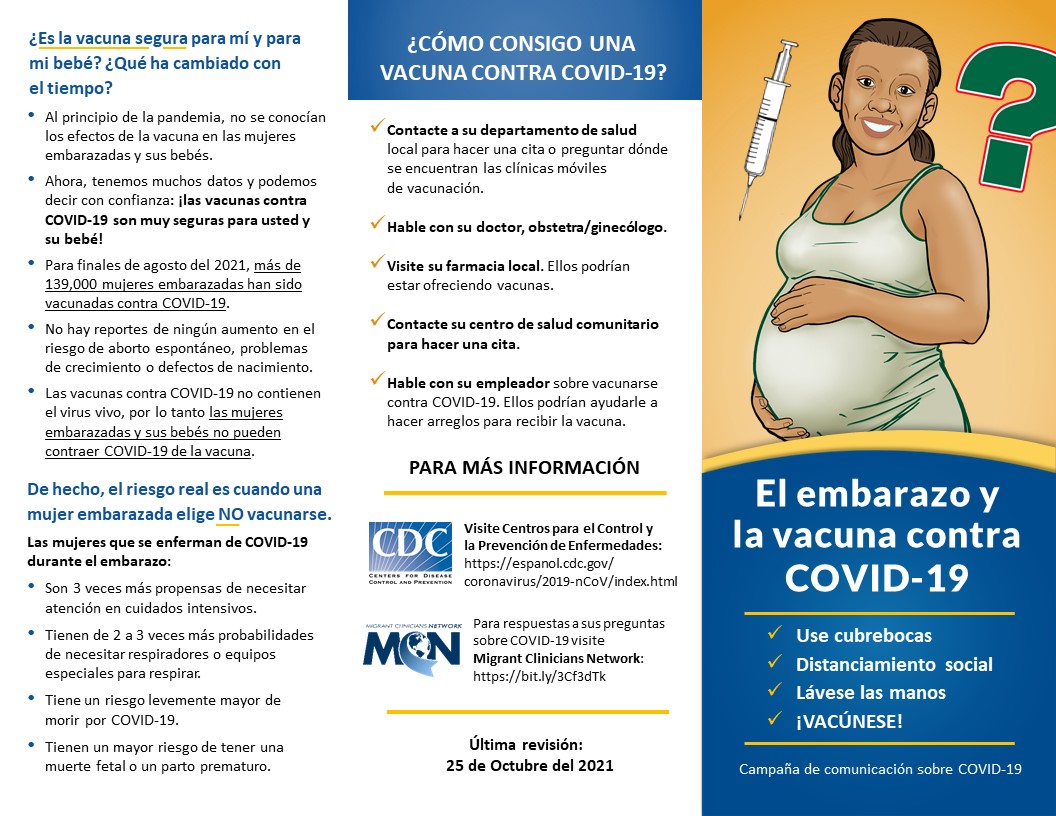
- 1-15-22_Spanish_Pregnancy-COVID-vaccine_Trifold_0.pdf (659.22 KB)
- 1-15-22_Spanish_Pregnancy-COVID-vaccine_Trifold-Template_0.pptx (9.05 MB)
- 1-15-22_English_Pregnancy-COVID-vaccine_Trifold_0.pdf (671.73 KB)
- 1-15-22_English_Pregnancy-COVID-vaccine_Trifold-Template_0.pptx (9.04 MB)
- 1-15-22_HaitianCreole_Pregnancy-COVID-vaccine_Trifold_0.pdf (654.59 KB)
- 1-15-22_HaitianCreole_Pregnancy-COVID-vaccine_Trifold-Template_0.pptx (9.02 MB)
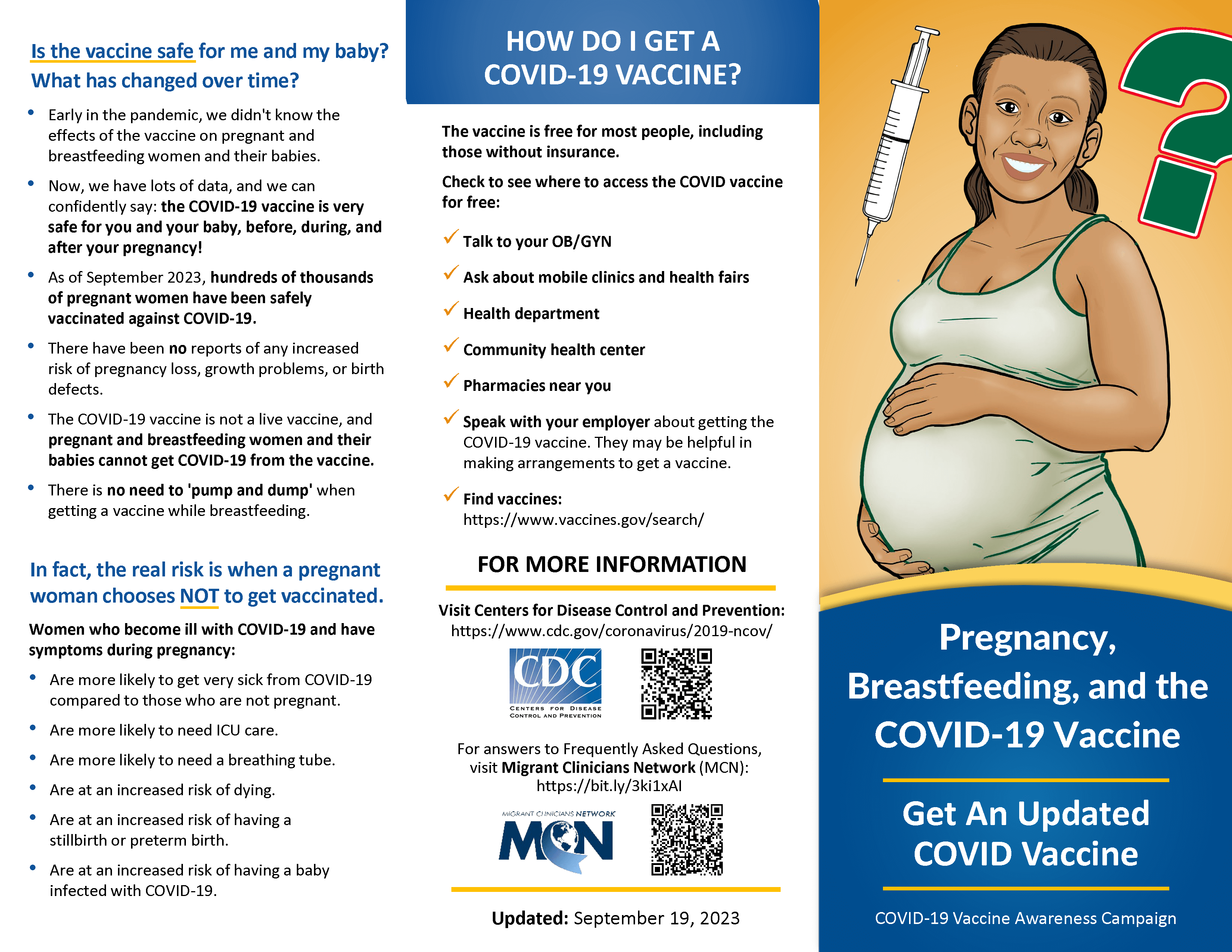
- 2023-10-05_Pregnancy-COVID-Vaccine-Trifold_Handout.pdf (742.98 KB)
- 2023-10-05_Pregnancy-COVID-Vaccine-Trifold_Handout_Template.pptx (8.51 MB)
- 2023-10-05_Embarazo-COVID-Vacuna-Tríptico_Material-de-apoyo.pdf (705.76 KB)
- 2023-10-05_Embarazo-COVID-Vacuna-Tríptico_Material-de-apoyo_Plantilla.pptx (8.51 MB)
- 2023-10-5_Model_depliyan_sou-vaksen-COVID-pou-fanm-ansent_0.pdf (660.84 KB)
- 2023-10-5_Model_depliyan_sou-vaksen-COVID-pou-fanm-ansent_0.pptx (7.03 MB)

- 2023-10-05_Pregnancy-COVID-Vaccine-Trifold_Handout.pdf (742.98 KB)
- 2023-10-05_Pregnancy-COVID-Vaccine-Trifold_Handout_Template.pptx (8.51 MB)
- 2023-10-05_Embarazo-COVID-Vacuna-Tríptico_Material-de-apoyo.pdf (705.76 KB)
- 2023-10-05_Embarazo-COVID-Vacuna-Tríptico_Material-de-apoyo_Plantilla.pptx (8.51 MB)
- 2023-10-5_Model_depliyan_sou-vaksen-COVID-pou-fanm-ansent_0.pdf (660.84 KB)
- 2023-10-5_Model_depliyan_sou-vaksen-COVID-pou-fanm-ansent_0.pptx (7.03 MB)
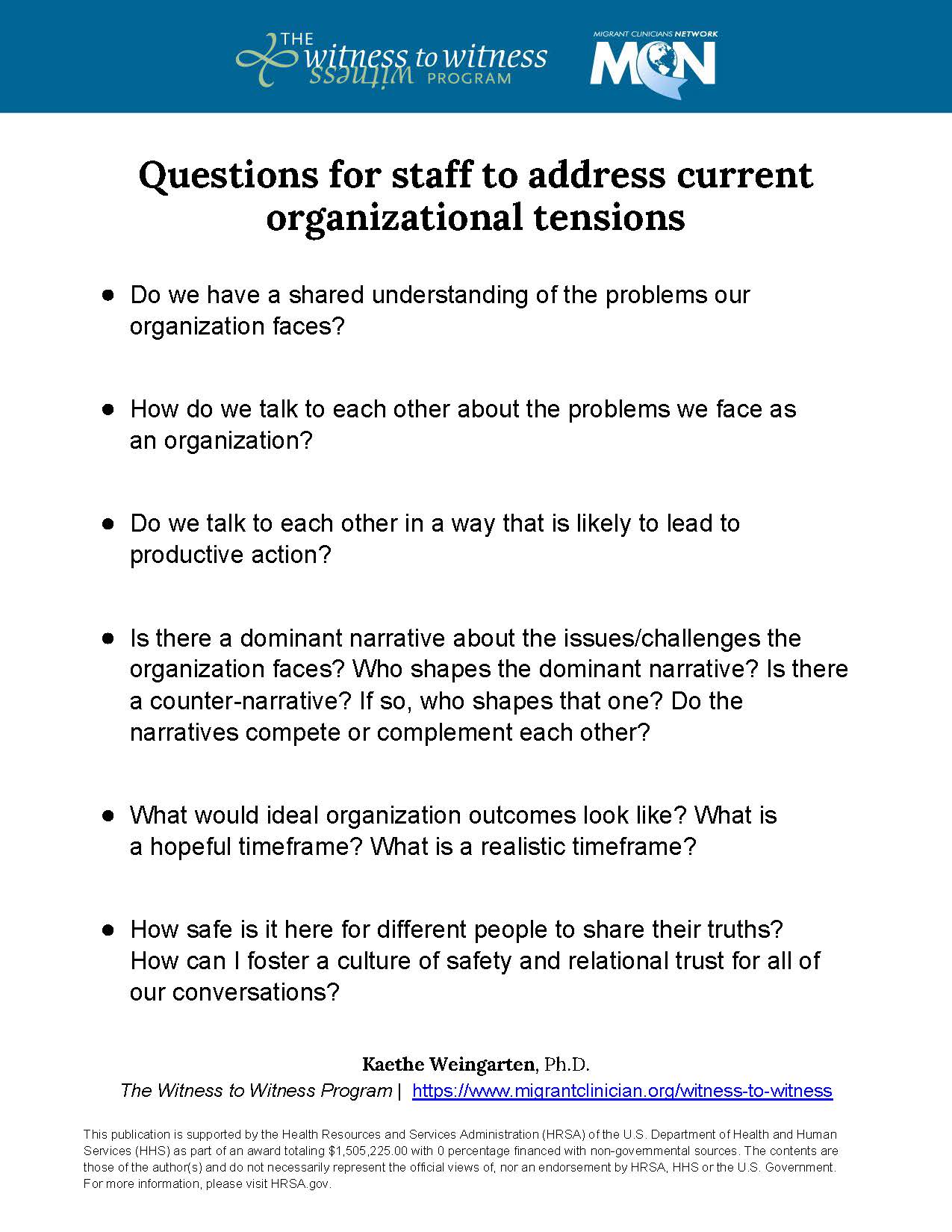
This publication was supported by the Health Resources and Services Administration (HRSA) of the U.S. Department of Health and Human Services (HHS) as part of an award totaling $ 1,310,460 with 0 percentage financed with non-governmental sources. The contents are those of the author(s) and do not necessarily represent the official views of, nor an endorsement, by HRSA, HHS, or the U.S. Government. For more information, please visit HRSA.gov.
- 2022-4-28_Questions-for-Staff-to-Address-Current-Organizational-Tensions_Handout.pdf (132.17 KB)
- 20D466~1.PDF (127.83 KB)
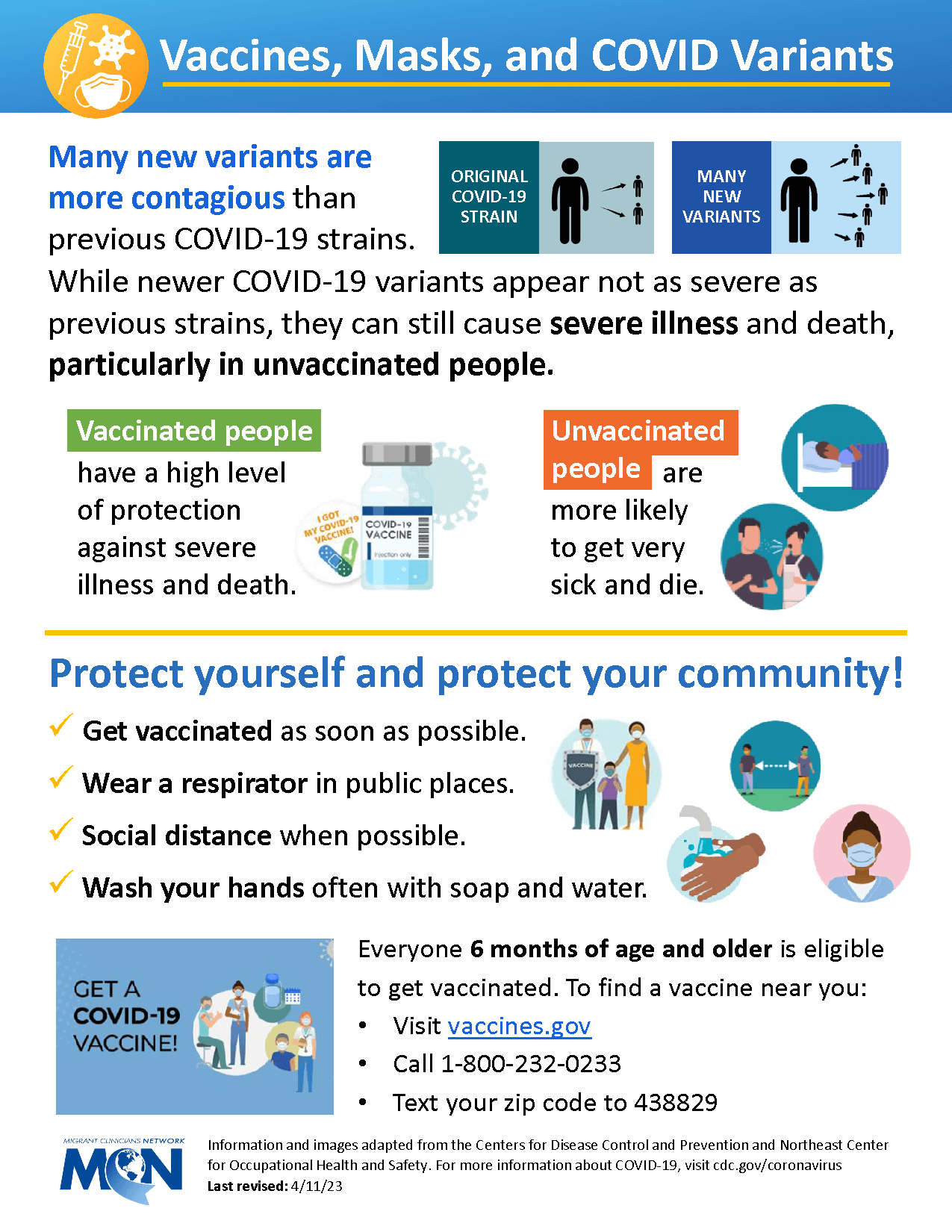
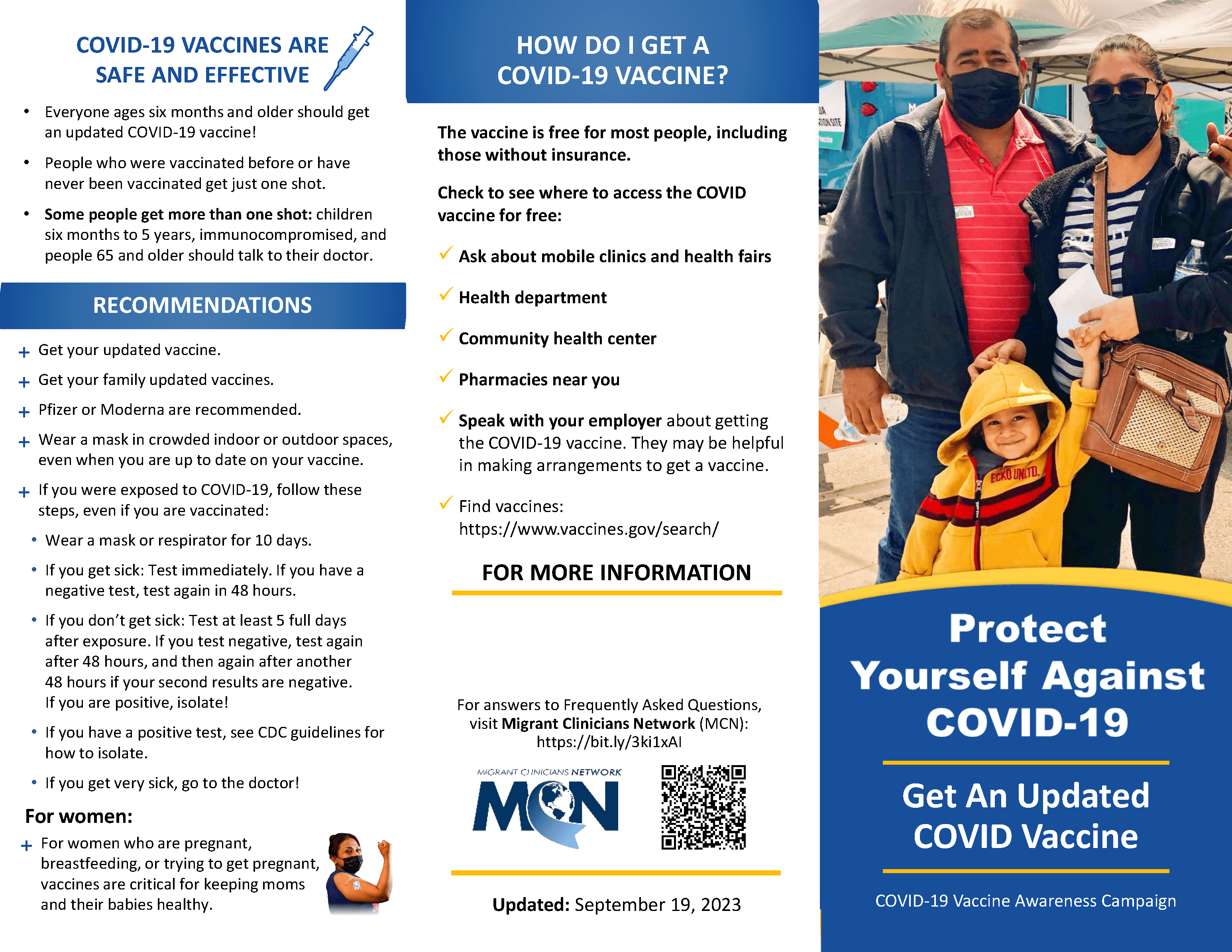
- 2023-10-05_General-COVID-Vaccine-Trifold_Handout_1.pdf (582.8 KB)
- 2023-10-05_General-COVID-Vaccine-Trifold_Handout_Template_1.pptx (2.67 MB)
- 2023-10-05_General-COVID-Vacuna-Tríptico_Material-de-apoyo_1.pdf (607.45 KB)
- 2023-10-05_General-COVID-Vacuna-Tríptico_Material-de-apoyo_Plantilla_1.pptx (2.66 MB)
- 2023-10-5_Modèl_depliyan_sou-vaksen-COVID-Jeneral_1.pdf (594.07 KB)
- 2023-10-5_Modèl_depliyan_sou-vaksen-COVID-Jeneral_1.pptx (2.58 MB)
Show your support of the vaccine in your community! MCN’s #YoMeLaPuse campaign offers five beautifully designed posters showing people of various ages after their vaccination that are available for download and printing. A sixth poster is customizable, allowing communities to paste in a photo of a local religious leader, or community health care providers, or other community leader who is proud to have gotten the vaccine. The posters are accompanied by a short video in Spanish, which can be played at community events and in waiting rooms.

Templates for creating your own posters are available below.
- 21_YMLP-mujer-1_Poster.pdf (1.06 MB)
- 21_YMLP-mujer-2_Poster.pdf (556.35 KB)
- 21_YMLP-mujer-3_Poster.pdf (513.64 KB)
- 21_YMLP-hombre-1_Poster.pdf (1.88 MB)
- 21_YMLP-hombre-2_Poster.pdf (309.49 KB)
- 2021_Yo-me-la-puse_Póster_Plantilla.pptx (1.34 MB)
- 2021_Yo-me-la-puse_Poster_Template.pptx (1.34 MB)
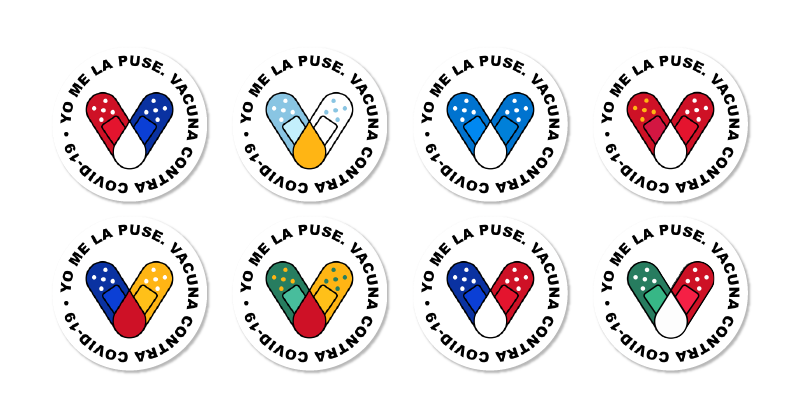
- Bolivia_Flag-Sticker.png (45.21 KB)
- Colombia_Ecuador_Venezuela_Flag-Sticker.png (44.35 KB)
- Dominican_Panama_Cuba_Chile_Paraguay_Flag-Sticker.png (44.98 KB)
- Guatemala_Argentina_Urguay_Flag-Sticker.png (44.68 KB)
- Honduras_ElSalvador_Nicaragua_Flag-Sticker.png (44.59 KB)
- Mexico_Flag-Sticker_ver_1.png (137.74 KB)
- UnitedStates_Flag-Sticker.png (44.9 KB)
- Haiti_CostaRica.png (100.52 KB)
- SPA_Spanish_Sticker_Template_08-26-21.pptx (1.87 MB)
- ENG_Sticker_HaitianCreole_template_7_22_2021.pptx (490.23 KB)
- 2021-8-25_V-Mark-Flag_Sticker_Template.pptx (1.86 MB)
Guía del proveedor de servicios de salud para enfermedades relacionadas con el calor - Junio de 2021
Los trabajadores agrícolas corren un riesgo importante de sufrir estrés por calor. El estrés por calor se produce cuando el cuerpo no puede deshacerse del exceso de calor y su temperatura central aumenta. El estrés por calor puede dar lugar a enfermedades más graves relacionadas con el calor, como el agotamiento por calor, los calambres por calor, el golpe de calor e incluso la muerte, si no se trata. El trabajo agrícola, que requiere la realización de un trabajo físicamente exigente durante largas horas en un clima caluroso y a veces húmedo, pone a los trabajadores en alto riesgo.
Esta guía proporciona información a los proveedores de servicios de salud sobre la prevención y el tratamiento de las enfermedades relacionadas con el calor. Dado que los trabajadores pueden no estar familiarizados con todos los síntomas del estrés por calor, es importante que los proveedores de servicios de salud hablen con los trabajadores agrícolas y otras personas en riesgo sobre los síntomas de las enfermedades relacionadas con el calor y su prevención.
This joint FJ and MCN publication was supported by the Health Resources and Services Administration (HRSA) of the U.S. Department of Health and Human Services (HHS) as part of awards totaling $1,949,598 with 0% financed with non-governmental sources. The contents are those of the authors and do not necessarily represent the official views of, nor an endorsement by, HRSA, HHS, or the U.S. Government. For more information, please visit HHS.gov.
Agricultural workers are at significant risk for heat stress. Heat stress results when the body cannot get rid of excess heat and its core temperature rises. Heat stress may lead to more severe heat illness including heat exhaustion, heat cramps, heat stroke, and even death if left untreated. Agricultural work, which requires performing physically demanding work for long hours in hot and sometimes humid weather, places workers at high risk.
This guide provides information to clinicians on the prevention and treatment of heat-related illness. Since workers may not be familiar with all of the symptoms of heat stress, it is important that clinicians discuss heat illness symptoms and prevention with agricultural workers and others who are at risk.
This joint FJ and MCN publication was supported by the Health Resources and Services Administration (HRSA) of the U.S. Department of Health and Human Services (HHS) as part of awards totaling $1,949,598 with 0% financed with non-governmental sources. The contents are those of the authors and do not necessarily represent the official views of, nor an endorsement by, HRSA, HHS, or the U.S. Government. For more information, please visit HHS.gov.
- 2021_Heat-Stress_Clinicians-Guide_0.pdf (1.02 MB)
Agricultural workers are at significant risk for heat stress. Heat stress results when the body cannot get rid of excess heat and its core temperature rises. Heat stress may lead to more severe heat illness including heat exhaustion, heat cramps, heat stroke, and even death if left untreated. Agricultural work, which requires performing physically demanding work for long hours in hot and sometimes humid weather, places workers at high risk.
This guide provides information to clinicians on the prevention and treatment of heat-related illness. Since workers may not be familiar with all of the symptoms of heat stress, it is important that clinicians discuss heat illness symptoms and prevention with agricultural workers and others who are at risk.
This joint FJ and MCN publication was supported by the Health Resources and Services Administration (HRSA) of the U.S. Department of Health and Human Services (HHS) as part of awards totaling $1,949,598 with 0% financed with non-governmental sources. The contents are those of the authors and do not necessarily represent the official views of, nor an endorsement by, HRSA, HHS, or the U.S. Government. For more information, please visit HHS.gov.
- 2021_Heat-Stress_Clinicians-Guide_0.pdf (1.02 MB)
These image-centric and engaging resources can help clinicians reach refugee, immigrant, and migrant communities with important information regarding getting vaccinated. The flyers are available in English, Spanish, and Haitian Creole, and both pre-made and editable versions are available. Users can insert their organization logo as well as state-specific information such as their state vaccine sign-up website and vaccine customer service phone number. Along with these fliers, MCN has created a simple ‘how-to’ video (see above) for editing the fliers.
The original designs for this resource were created by a staff member of East Coast Migrant Head Start Project who is the daughter of a farmworker, and who had once gone to East Coast Migrant Head Start Project centers herself. The flyers were adapted by MCN.
- 9-26-23_What-To-Expect-COVID19-Vaccine_English-Handout.pdf (288.57 KB)
- 9-26-23_Que-saber-sobre-la-vacuna-contra-COVID_flyer_Template.pdf (301.65 KB)
- 9-26-23_Ki-sa-pou-ou-atann-le-w-ap-resevwa-vaksen-COVID19.pdf (291.1 KB)
- 9-26-23_What-To-Expect-COVID19-Vaccine_English-Template.pptx (1.58 MB)
- 9-26-23_Que-saber-sobre-la-vacuna-contra-COVID_flyer.pptx (1.52 MB)
- 9-26-23_Ki-sa-pou-ou-atann-le-w-ap-resevwa-vaksen-COVID19_Template.pptx (1.58 MB)
Show your support of the vaccine in your community! MCN’s #YoMeLaPuse campaign offers five beautifully designed posters showing people of various ages after their vaccination that are available for download and printing. A sixth poster is customizable, allowing communities to paste in a photo of a local religious leader, or community health care providers, or other community leader who is proud to have gotten the vaccine. The posters are accompanied by a short video in Spanish, which can be played at community events and in waiting rooms.

Templates for creating your own posters are available below.
- 21_YMLP-mujer-1_Poster.pdf (1.06 MB)
- 21_YMLP-mujer-2_Poster.pdf (556.35 KB)
- 21_YMLP-mujer-3_Poster.pdf (513.64 KB)
- 21_YMLP-hombre-1_Poster.pdf (1.88 MB)
- 21_YMLP-hombre-2_Poster.pdf (309.49 KB)
- 2021_Yo-me-la-puse_Póster_Plantilla.pptx (1.34 MB)
- 2021_Yo-me-la-puse_Poster_Template.pptx (1.34 MB)
This colorful vaccine calendar comic gives low-literacy information on vaccines and some information on why adults need immunizations, too. Available in high resolution to download and print into poster size.
Worker Protection Standard Pesticide Safety Training Curriculum - Culturally and linguistically appropriate curriculum with supporting resources for training workers on the revised Worker Protection Standard. Developed by the Florida State University PISCA Project and Migrant Clinicians Network.
- WPS PesticidasEnglishFINAL4_2021Website.pptx (33.52 MB)
- WPS PesticidasSpanishFINAL4_2021_Website.pptx (19.67 MB)
- WPSPesticidesFlipChartFINAL_1_23_2020.pdf (8.32 MB)
- WPS Pesticide Facilitator Guide English 2020.pdf (2.03 MB)
- WPS Pesticide Training Facilitator Guide Spanish 2020.pdf (1.99 MB)
- Juan Abre los Ojos como protegerse de los pesticidas (01 14 2020)_0.pdf (7.25 MB)
The New England Journal of Medicine has an article analyzing early cases in China which gives some clarity around how the virus works: “Clinical Characteristics of Coronavirus Disease 2019 in China".
The CDC’s archived webinar from last week provides a useful overview for clinicians: “Coronavirus Disease 2019 (COVID-19) Update—What Clinicians Need to Know to Prepare for COVID-19 in the United States.”
This list of resources compiled by the federal government of Mexico were chosen because the Mexican government is doing a commendable job alerting their health workers to new essential information and providing easy to understand resources. With a limited number of Spanish language resources available in the US, this list fills important gaps.
These infographics and social media cards are simple and bright. The order in which the recommendations are presented is great.
This list of resources was selected because of the breadth of languages and the simplicity of the infographics.
APHA's Get Ready campaign helps Americans prepare themselves, their families and their communities for all disasters and hazards, including pandemic flu, infectious disease, natural disasters and other emergencies.
The Hesperian provides excellent patient education material on COVID-19 in a number of languagues for use internationally or with immigrant communiites in the United Sates.
Diabetes is a common but complicated health condition facing agricultural workers within the United States. To help assist agricultural workers in learning about this diagnosis, Migrant Clinicians Network has partnered with professional artist and collaborator Salvador Sáenz to create “Mi salud es mi tesoro: Un guía para vivir bien con diabetes,” or, “My Health is My Treasure: A Guide to Living Well with Diabetes.” This low-literacy comic book explores the topic through the full-color story of an agricultural farmworker named Goyo, whose recent diagnosis of diabetes prompts him to engage in conversations with other agricultural workers on topics of diet, exercise, and illness prevention while facing the unique hurdles of living a life of migration. The comic book was originally produced in Spanish, and is now available in English below. Please click "Leer en español" above to access the Spanish-language version.
In order to print the right number of comic books, we are asking organizations to pre-order in quantities up to 500. The comic book and shipping will be paid for by MCN. In exchange, we simply ask that you, or someone from your organization, complete an evaluation of the comic book several months after you first receive it. Information from the evaluation will help us improve our resources and will give us important insight into how the comic book is being used in the community.
Download a digital copy of the comic book below!
- 2022-6-13_My-Health-Is-My-Treasure_Comic_WEB.pdf (4.97 MB)
- 2022-6-13_My-Health-Is-My-Treasure_Comic_PRINT.pdf (38.95 MB)
- 2023-8-4_Mi-salud-es-mi-tesoro_Comic_WEB_0.pdf (4.87 MB)
- 2023-8-4_Mi-salud-es-mi-tesoro_Comic_PRINT.pdf (38.74 MB)
- 2023-8-21_Mi-salud-es-mi-tesoro_PuertoRico_Web_0.pdf (5.74 MB)
- 2023-8-21_Mi-salud-es-mi-tesoro_PuertoRico_PRINT.pdf (40.76 MB)
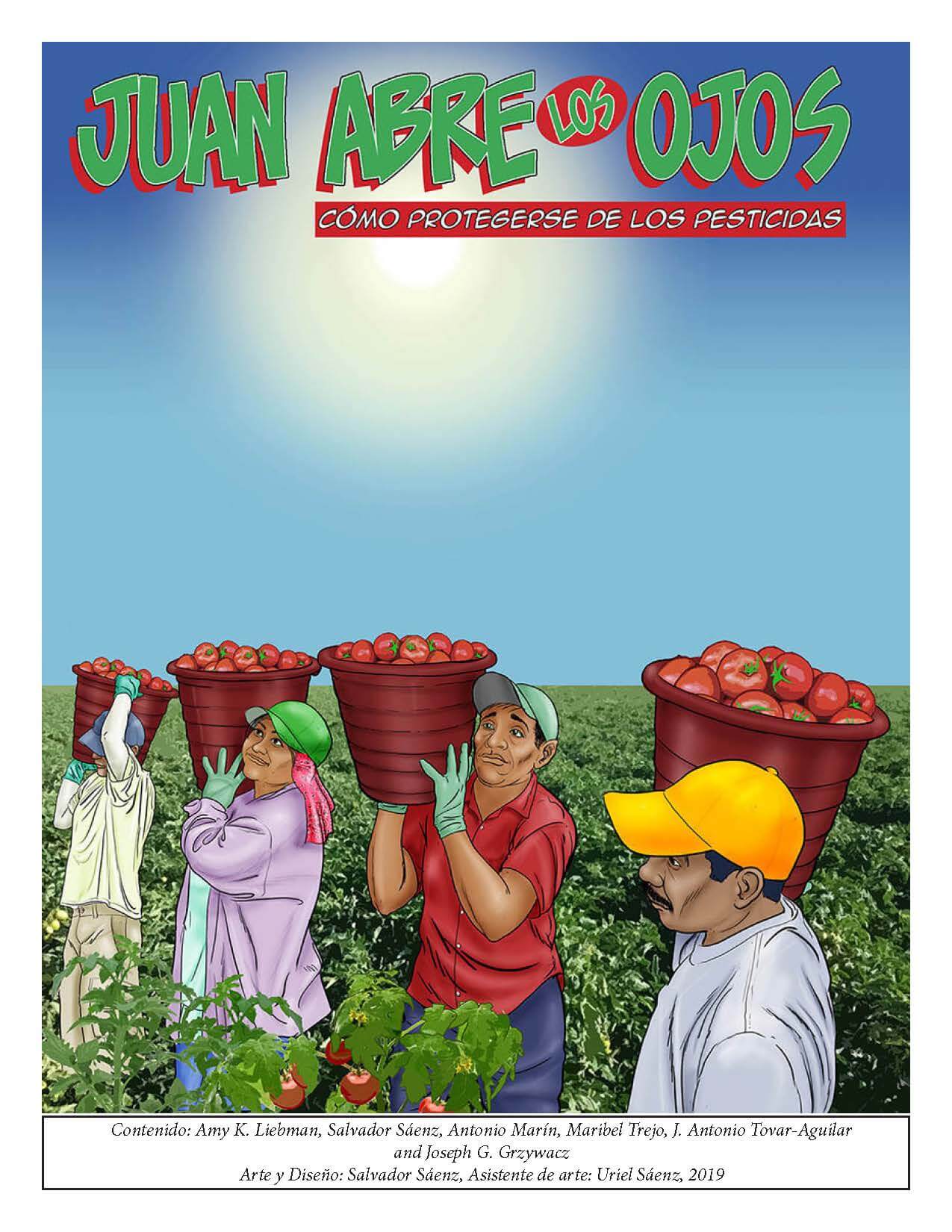
This comic book tells us how Juan learned to protect himself from pesticides at work. This resource presents in a very simple and entertaining way what are the sources of exposure to pesticides, their short- and long-term effects on the body, and what can be done to protect oneself from them. It is a great resource for farmworkers and promotores de salud!
These Spanish and English cholesterol patient education resources were developed by the University of Texas Health Science Center at Houston and the School of Public Health, El Paso Regional Campus. The artwork was done by Salvador Saenz, a well-known and respected public health educator and artist based in El Paso, TX
- CHOLESTEROL NOVELLA fast version_0.pdf (2.99 MB)
- CHOLESTROL PROMOTORA GUIDE fast version_1.pdf (623.95 KB)
- COLESTEROL NOVELA version rapida_0.pdf (2.97 MB)
- COLESTROL GUIA PROMOTORA version rapida_0.pdf (631.83 KB)

